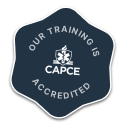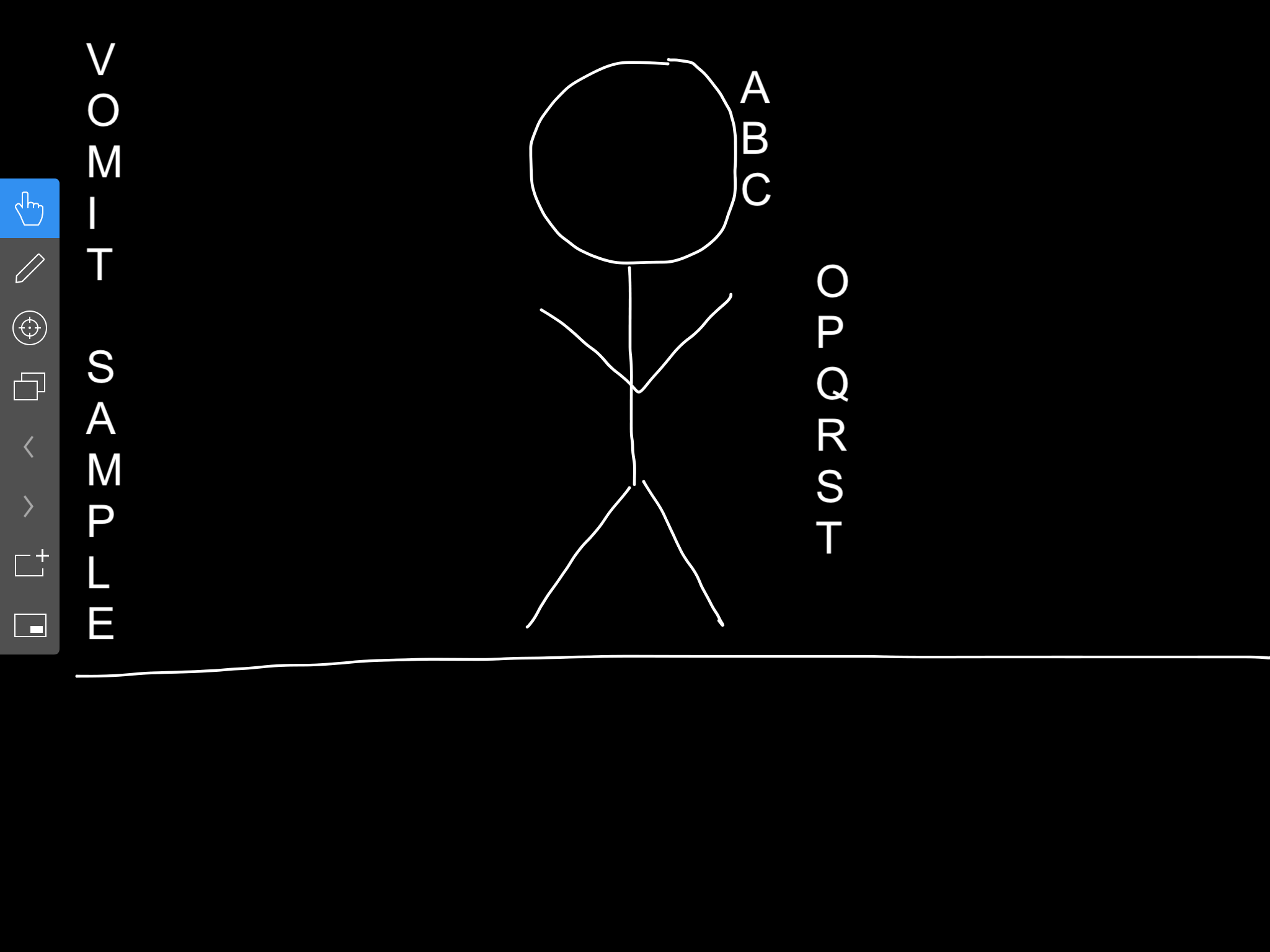
At EMTprep, we often hear of the struggles our students have with the oral station during their NREMT practical skill exams. Students will usually complain that their proctor was too strict, they were asked questions they were unaware were even in their scope, etc. We created this study guide to shed some light on this specific skill station, and also to equip you with the tools and tips you need to pass it.
In Paramedic school, we (EMTprep staff) teach our students one single trick that makes failing the skill station harder than passing it. What is that one trick you ask? Let us show you. Below you will find a very simple picture with acronyms you should be very familiar with. If you are not sure what these acronyms are, we will go over them a bit in this study guide, however, you should absolutely go back and review patient assessment in your textbook.
During the skill station, the proctor should supply you with a pen and paper. If they don’t, ask for these supplies! We at EMTprep have never personally heard of this happening, but we want to make sure we cover all of our bases here. In the top 2/3 of your paper, directly in the center, draw a simple stick figure. Don’t get too fancy here, the goal for this template we’re creating is to complete it quickly so you can get on with the skill station itself. On the left-hand side of the paper, do your VOMIT and SAMPLE acronyms. Next to the patient’s (stick figure's) head, type the ABC acronym. To the right of the stick figure, put your last acronym, OPQRST.
Time for a little review with all these acronyms:
VOMIT. Vitals, Oxygen, Monitor, IV, Transport. This acronym ensures you hit all the necessary steps that can get you in trouble, i.e. not treating the patient, not checking their ECG rhythm, and/or not declaring the proper method of transport.
SAMPLE. Signs/Symptoms, Allergies, Medications, Past Medical History, Last Oral Intake, Events leading up to the illness. A SAMPLE history should be done on every patient during the history-taking portion of the exam. Sometimes you will get a patient who is unconscious, but you should still verbalize something like: “I would normally attempt to gather a SAMPLE history from the patient, but I am unable to due to their mental state. Is there anyone else on scene who can provide this information?” That shows the proctor the correct thought processes are running through your head. It also covers your bases here.
ABC. Do we really have to review this one!?! ABC is to EMS as Peanut Butter is to jelly. Nonetheless, it stands for Airway, Breathing, and Circulation. Even if you have a patient who is talking to you with no difficulty, DO NOT forget to ask about breath sounds. Run through these or verbalize what you’re gathering to the proctor, “My patient is talking to me in full sentences so I know I have a patent airway, I will now auscultate lung sounds, and check a radial pulse, what do I auscultate and palpate?”
OPQRST. Onset, Provocation, Quality, Radiation, Severity, and Time. This acronym, out of the 4 on the template, will usually be the one that throws people for a loop. This is most often caused by people not verbalizing or forgetting what questions to ask with each step. Here is a list of questions for you to reference with regard to each piece of the acronym:
- Onset: What were you doing when the pain/event started?
- Provocation: Does anything make your pain better or worse?
- Quality: Can you describe the pain for me?
- Radiates: Show me where it hurts the most. Does your pain go anywhere from that point?
- Severity: Ask the patient to rate the pain on a scale of 0-10
- Time: How long ago did the pain or event start?
You may be asking, what do I do with the stick figure in the middle of the page? Great question! Use the stick figure for two things:
- Ensure you ask questions about each part of the body, from head to toe. Do not be afraid to verbalize everything you have found once you get to the feet and say, “I have found X, Y, and Z problems, am I missing anything else as I examine my patient?
- Jot down areas of injury. Make an X or circle the area that is injured. You could even write over a specific area what the injury is, i.e. bleeding scalp wound on the stick figures scalp.
Lastly, use the bottom third of your template (the area under the line), to jot down all your interventions and any notes you want to reference. This area keeps you on top of your treatment decisions and reminds you to follow up with any procedures that might need to be reexamined or addressed.
For more information, check out the YouTube video (link below) we put together to help you pass this skill station. We truly believe that if you create this template and ask the questions associated with it, you will pass it with ease.
Oral Station – Advanced Psychomotor Exam – AEMT, I99, Paramedic
- Dozens of courses and topics
- State-specific requirements
- We report to CAPCE in real time



